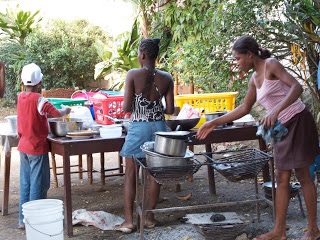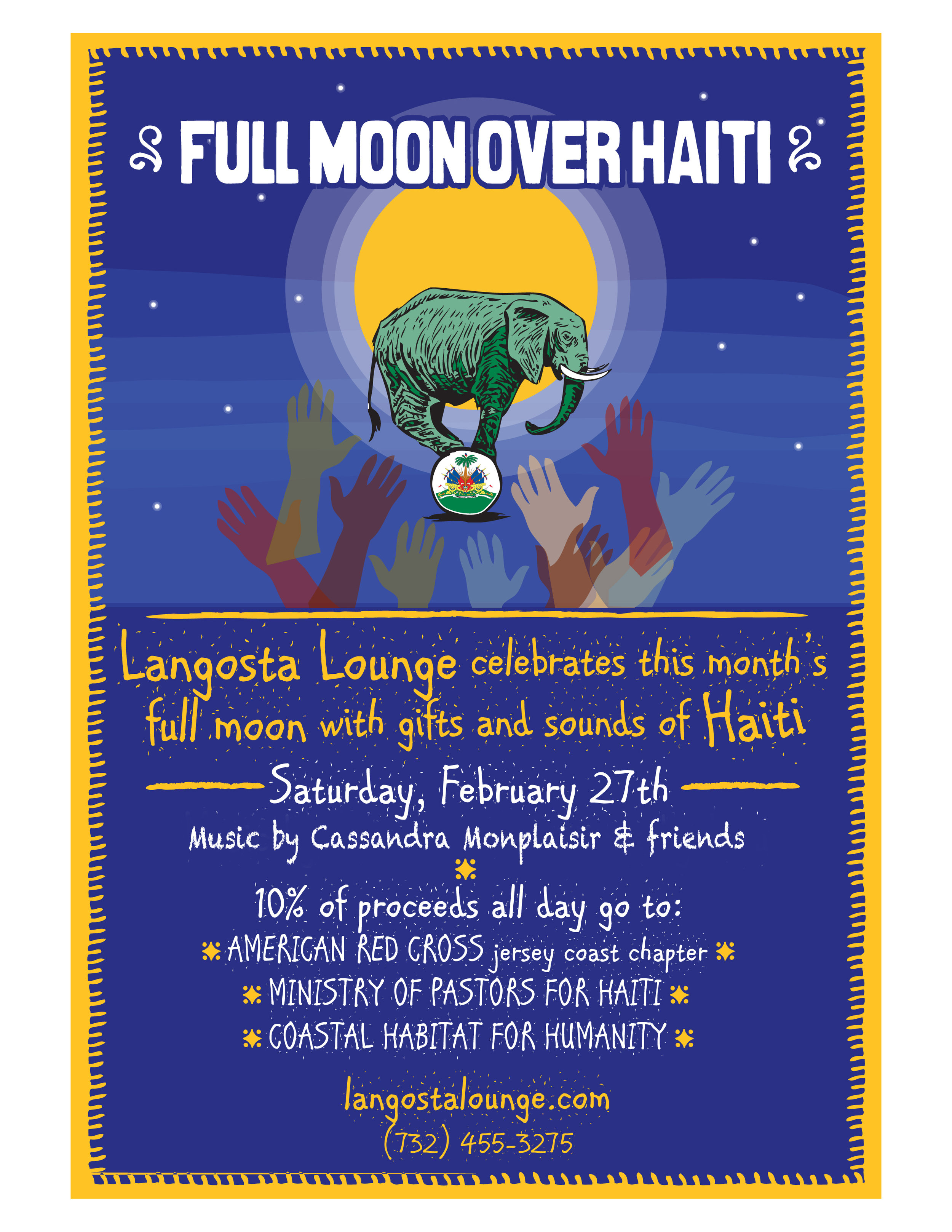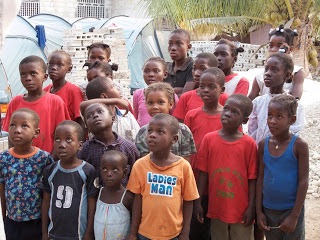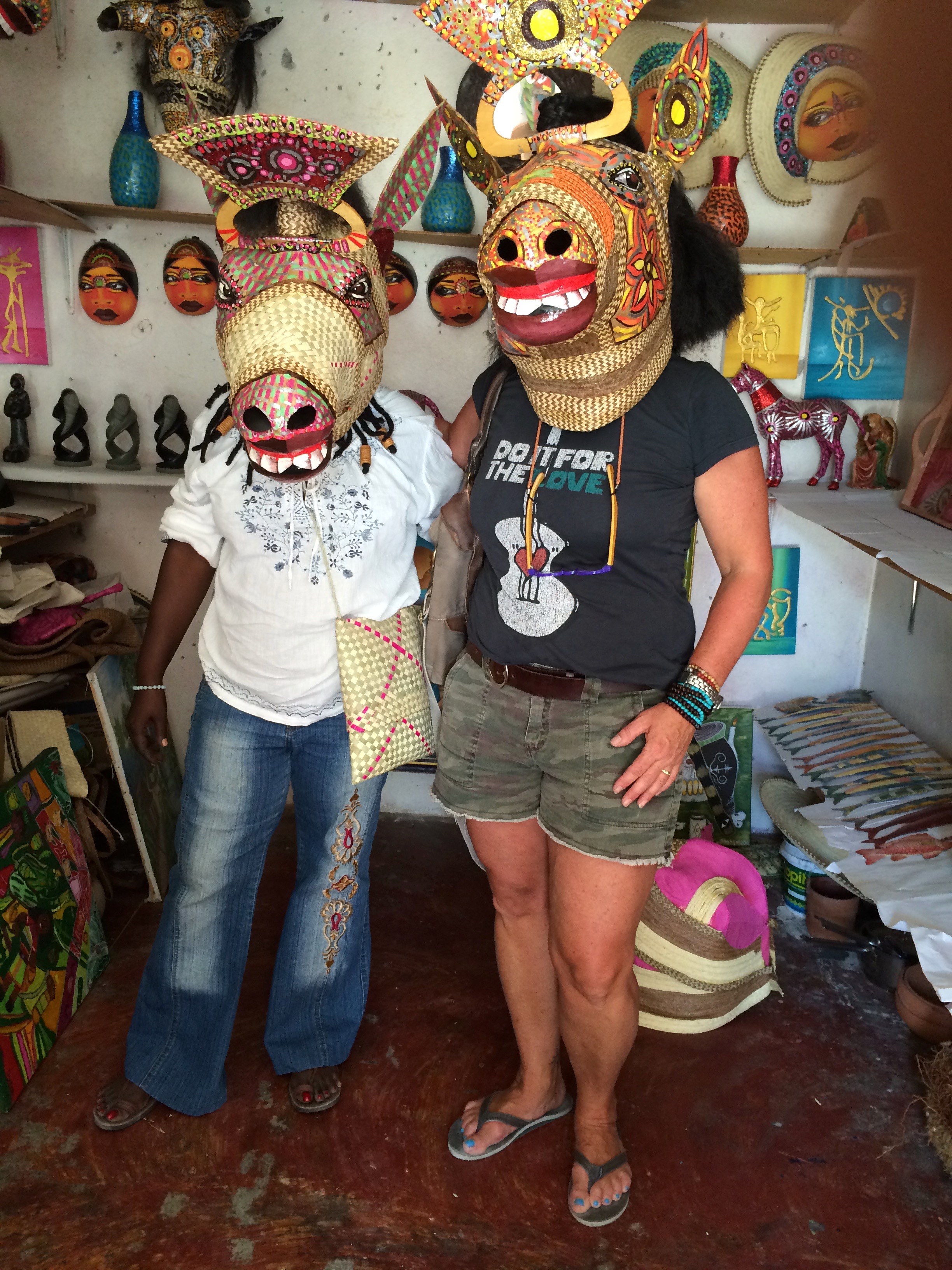Fulll Moon Over Haiti
When disaster struck Haiti, our local community came together.
Our dear friend and Haitian Methodist Pastor, Sony Augustine formed a strong relationship with myself as well as the Ministry of Pastors for Haiti, a collective of Haitian ministers in the area (Asbury, Neptune City, Ocean Grove) of diverse religious backgrounds. Asbury Park is home to one of the five largest Haitian populations in U.S. and so it was important to assess what was happening there. This would allow the pastors to report back to congregations, to make connections, and to get relief and aid into country.
As the token Buddhist, I was grateful for the welcome I received as I entered this particular group. I was infinitely grateful to be a part of these efforts, which would eventually be endorsed by Asbury Park itself. I made the trip with the Sonny Augustine and Marc Steiner (a photographer and videographer who documented the trip.) You can see more photos here.
In Haiti, there are no institutional safety nets, no governmental safety nets. And so, non-profits become the safety nets. There are religious non-profits, orphanages, missions, and the like. As with anything else, some are great and others … well, not so much. When we went to Haiti, we were filming and touring on the ground to bring back stories: some uplifting some sad. We’re hoping to further the awareness of the good that is being done and all the hard work ahead of us.
We began with a tour of Port Au Prince and the outlying area. There we met with e so many people doing so much good there. One of those people, Elizabeth, ran an orphanage to which we would continue to send aid and support after our trip. Through our interactions with people like Elizabeth, we found ourselves profoundly heartened by the strong thread of family in Haitian communities, and by the enduring hope and resilience they exemplify in spite of, or perhaps because of, the decades of political and financial strife in the country.
The food was minimal but the spirit overflowed. The people in their time of need were so generous and welcoming with their hearts. Our trip was full of warmth, connection, community, and love. We returned to our home state feeling exhausted, inspired, renewed. We arranged to send containers of goods, as well as money through outreach agencies in Asbury and across New Jersey. We raised over $40,000 and used the money to ship containers of goods to the people of Haiti, to those whom we considered to be the newest members of our community family.
While it was our efforts to report back to the Haitian communities in New Jersey that brought us to Port Au Prince, we could not help but be caught up in the culture of the island.
On this particular trip we met Charlotte Charles, a local artist who empowers women in her community. Charlotte takes women who are trying to support their families, teachers them art, and helps them to work to earn a living wage. These women create art items for tourists that are sold in gift shops. Charlotte herself is known for intricate and beautiful masks and has developed an artist community of mostly women to support one another.
Haiti also has a strong Jazz community and the outlet that the arts provide give the people of Haiti a mode of self-expression, a way to get feelings out, and a way to heal and grow. There’s an active artist and creative community there but it can be difficult for these gifted artists to get their pieces to an American audience. Clothing Designer Donna Karan has created Papillion Enterprise Haiti to support local women artisans by providing meaningful work, training, and a living wage. Customers can shop online from this socially conscious collective, knowing they’re supporting women in the process.
The efforts of Charlotte Charles, Donna Karan, and the volunteers and community members we met in Haiti are helping to make a difference on the island. These efforts are serving to send ripples of support, empowerment, and change that will no doubt impact the future of Haiti and the preservation of its artistic and beautiful culture.
When you come back from a place like that so many things become visible in different ways. The truth is that most people may not travel to places like Haiti. But it is place where you could retreat, eat lobster on the beach, and sleep in a clean loving guest house provided by an owner who wants you to have an awesome experience in the place they call home.
I saw many, many, powerful and moving things when I visited Haiti but one visual remains with me as I write this. Every day of my trip I watched people in the place we were staying. I saw that they’d rise in the morning get dressed in fine clothes, and head off to work. Dirt roads or not. Long treks or not. The children would rise early, don well-kept uniforms for school and head off, seemingly unfettered by the utter poverty in which they lived.
There’s a part of me that becomes strangely envious for a moment when I think of those well-dressed children, men, and women heading out on those early mornings. Here in the U.S. we tend to take simple things for granted (clean clothes, water, bed, electricity, ability to cook our food, flush toilet, remove garbage). The people of Haiti lack a great many of those things in general. Even so, they may very well be stronger, more vibrant, and more creative because they do not have the resources that we do. When I think of those people waking and walking unencumbered by the weight of a “lacking” mentality, I find them to be people trying to do good things with limited resources. I find that this inspires me to do the same. Join us on March 7th at 5pm for the final cut of the documentary from our trip
Thank you!



